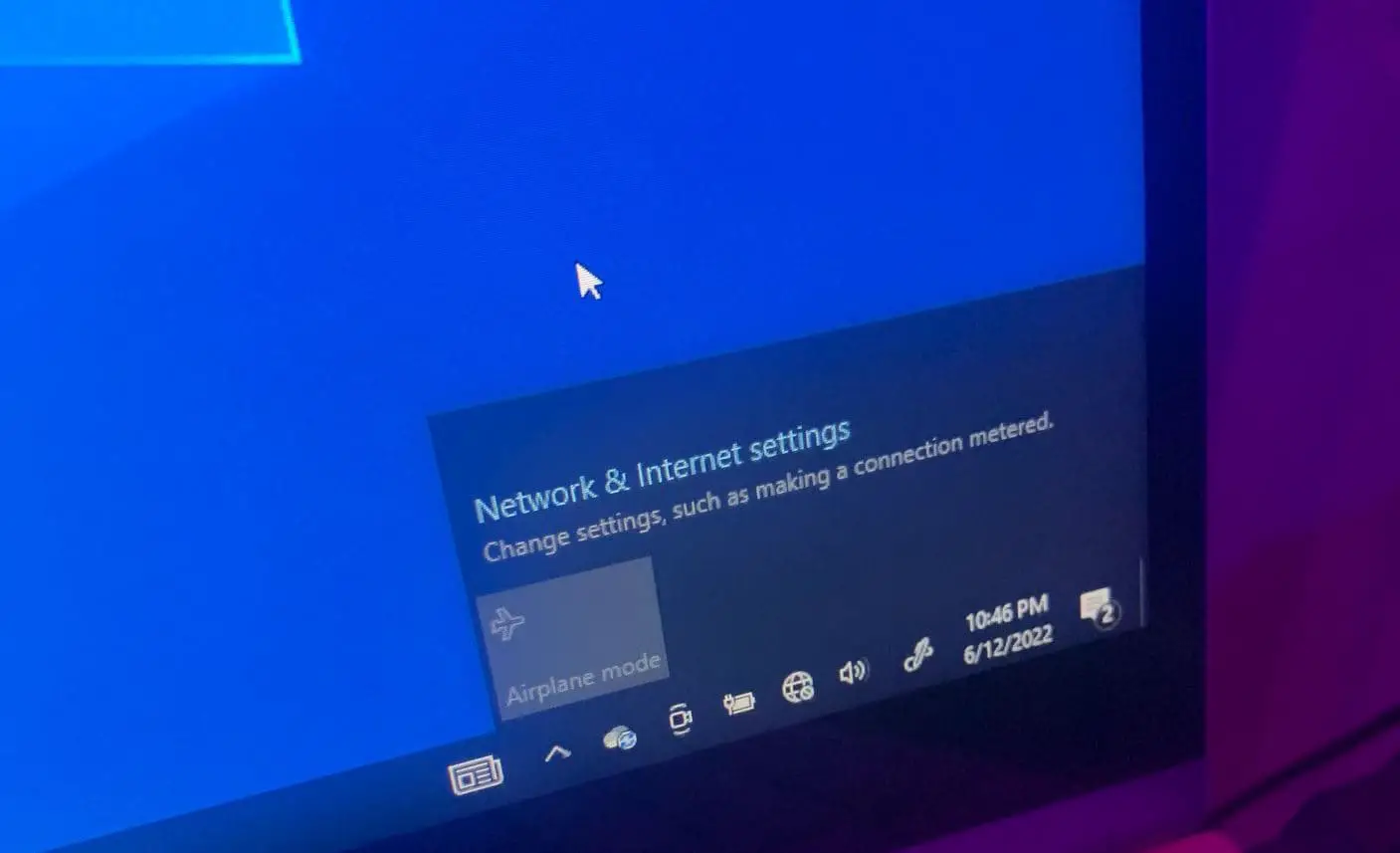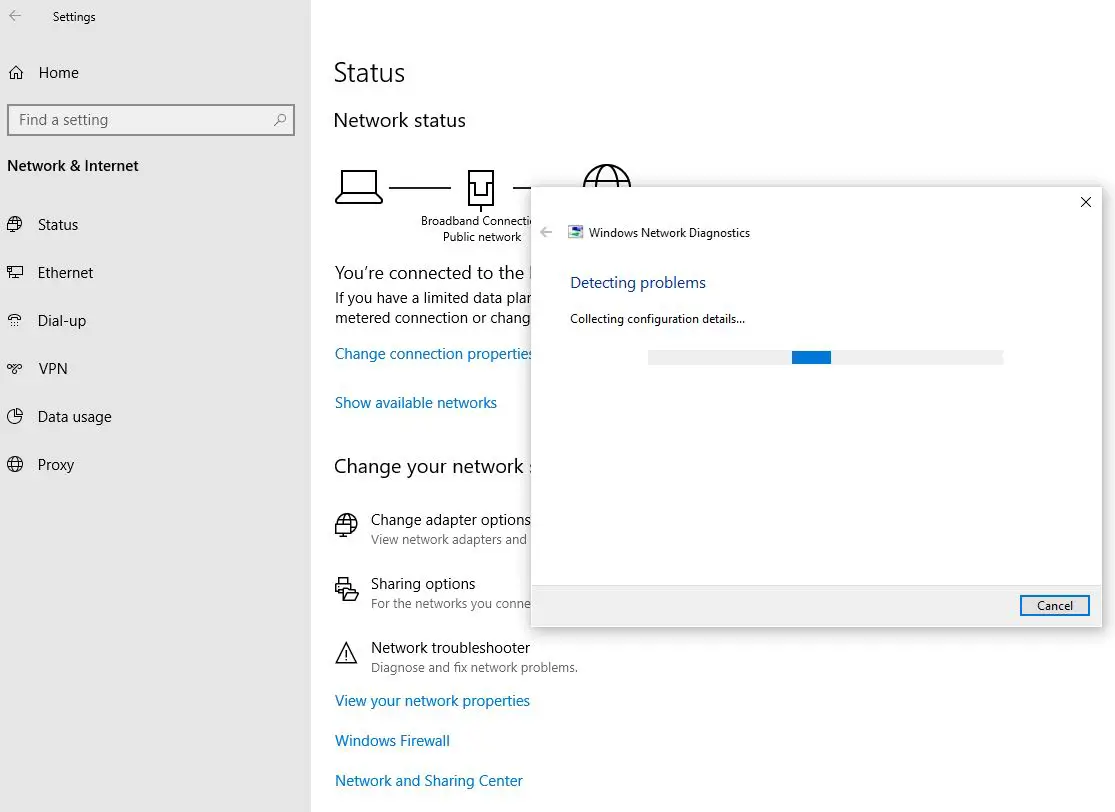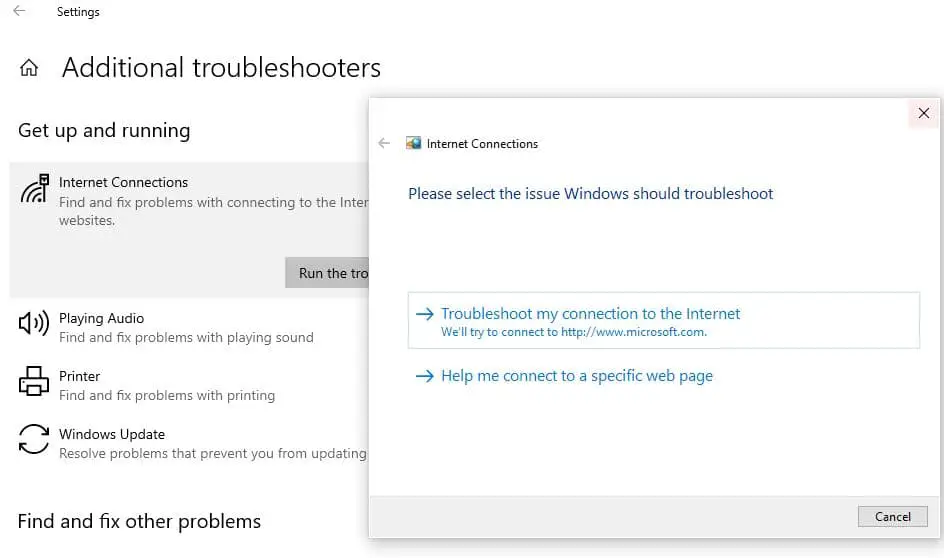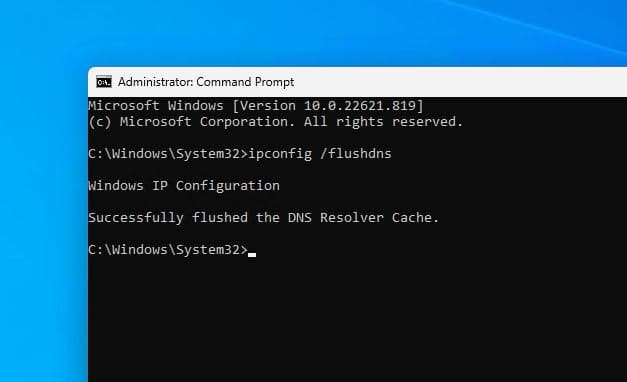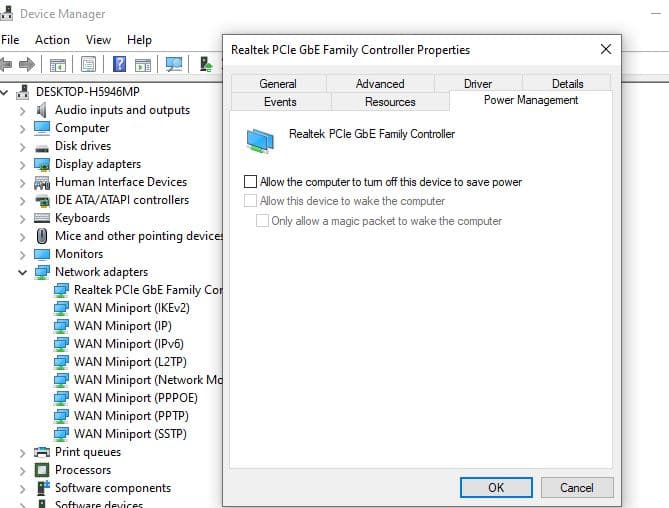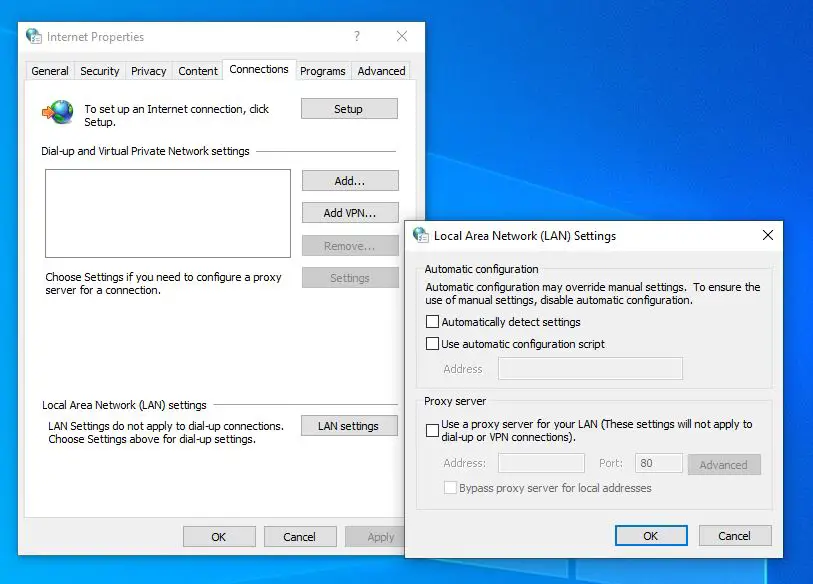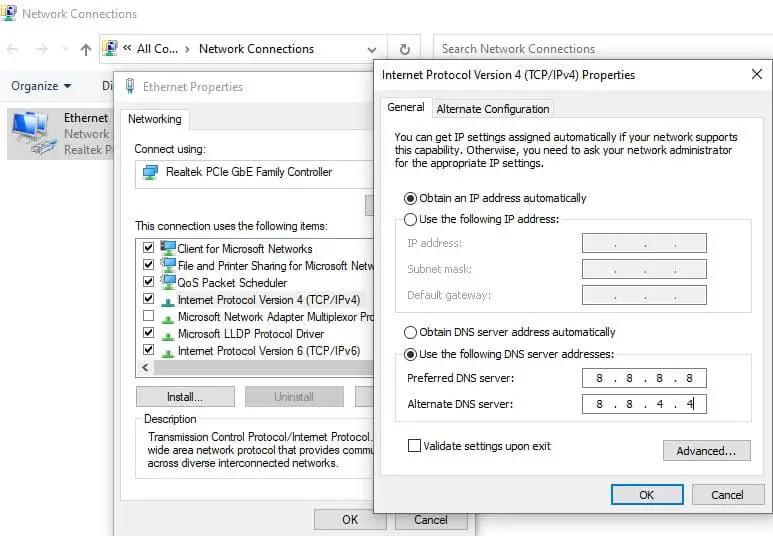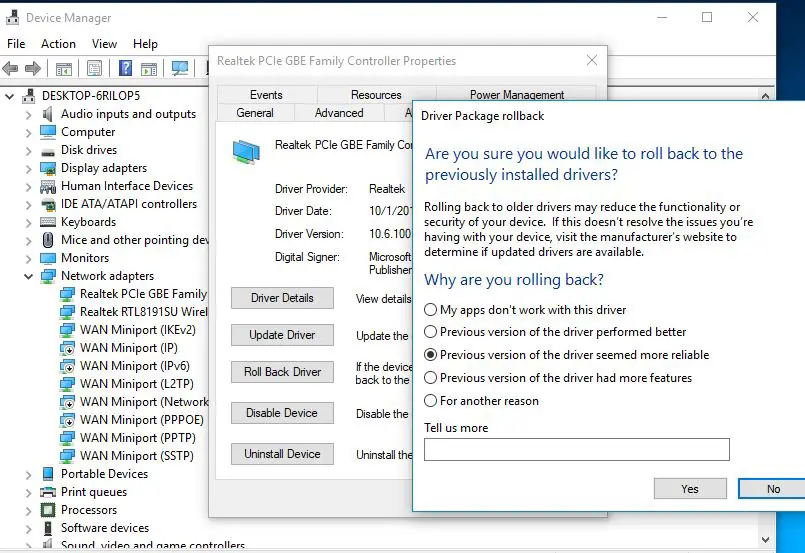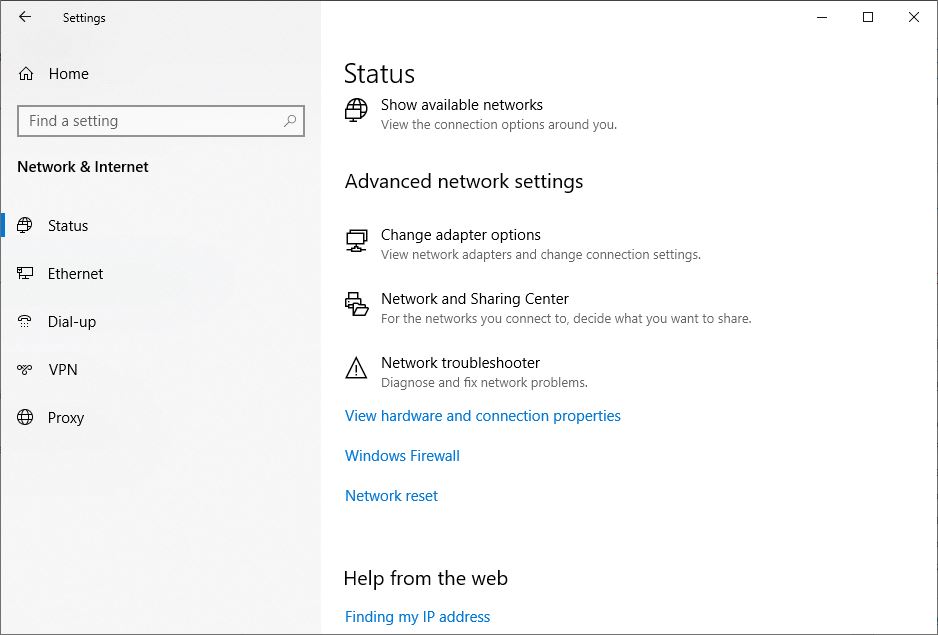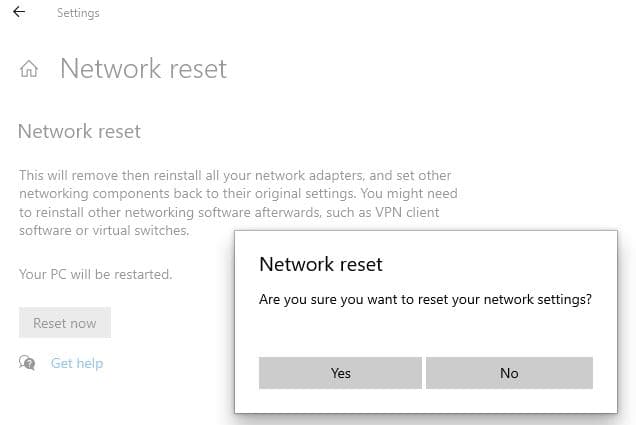Microsoft regularly updates Windows 10 with the latest bug fixes and security improvements and it’s essential to install Windows updates on your device to keep it safe and secure. But sometimes unexpected issues can occur, one of which is Internet not working after Windows 10 update. The Wifi is connected but there is No Internet access or the WiFi keeps disconnecting frequently. A number of users report, Wi-Fi Not Working After Updating to Windows 10. Well, Internet connectivity issues can be frustrating, but there are several solutions you can apply to fix and restore internet access on Windows 10. In this article, we will discuss why Windows 10 Internet not working and provide solutions on how to fix them.
No internet after Windows 10 update
There can be several reasons why the Internet not working after update, Outdated network drivers or incorrect network configurations are common which may result connectivity issues. Again loose or unplugged network cable, weak Wi-Fi signal, third-party software or computer’s network hardware malfunction also could be the reason why there is No Internet access after the Windows update.
- Running related troubleshooters is one of the most effective ways to fix Internet problems on Windows 10.
- In addition, you need to update the network or WiFi driver that helps restore internet access on your computer.
- You can also Reset the TCP/IP Stack and Clear the DNS Cache on your computer to fix such problems.
How to Troubleshoot Internet Issues
Let’s first restart your computer and router, this can often resolve temporary connectivity issues. In addition, check the physical connections before getting too involved with troubleshooting.
Ensure you check the physical connections before getting too involved with troubleshooting. Someone could have accidentally kicked the router or modem’s power cable or pulled an Ethernet cable out of a socket, causing the problem.
If you are experiencing problems with Wifi connectivity check the WiFi signal or take the laptop closer to Router. Makes sure Wi-Fi is set to On. Open Settings > Network & Internet > Wi-Fi and move the slider to the On position. Also, make sure that the physical Wi-Fi button on your laptop is turned on.
In addition, if you are using VPN, disconnect it and check probably the internet working now. Here are a few troubleshooting steps to apply if the Internet not working with VPN connection.
Run Network troubleshooter
Let’s first run the Network Troubleshooters help automatically identify and eliminate problems with the network adapter and its related drivers
- Press the Windows key + X and select settings
- Click on Network and Internet then click on Network Troubleshooter,
The troubleshooter automatically detects network and internet problems and try to fix them. You only need to follow on-screen instructions, once done reboot your system and check if this help Restore the internet access on Windows 10.
In addition, if you notice Laptop is Connected to Wi-Fi, but there is No Internet Access then run the internet troubleshooter following the steps below.
- Press Windows key + I to open the settings app
- Go to Update & Security then troubleshoot, and Click on the additional troubleshooters link,
- Now select Internet connections, then click on Run the troubleshooter,
- Select Troubleshoot my connection to the internet and follow on-screen instructions to restore internet access.
Run Network Troubleshooting Commands
Sometimes incorrect network configuration or DNS Cache could cause internet connectivity problems on Windows 10. Flush the DNS cache and reset the Transmission Control Protocol/Internet Protocol (TCP/IP) help fix Internet and wifi connectivity issues.
- Press Windows key + S, type cmd, and click on Run as administrator,
- First, flush the DNS cache using the command ipconfig /flushdns
- Next, run netsh int ip reset and netsh winsock reset command to reset TCP/IP
- And run ipconfig /release and ipconfig /renew to release and request a new IP address from DHCP server.
Once done close the command prompt and reboot your PC. Now open the web browser and check if you access the Internet.
Check Network Adapter Settings
Checking power management settings for network or WiFi adapter can be helpful if the power saving feature cause the adapter to turn off or enter a lower power state and results connectivity issue.
- Press Windows + X and select “Device Manager“
- This will display all devices and peripherals connected to your computer,
- Locate and expand the “Network Adapters” option
- Right-click on your network adapter and select “Properties.”
- Move to “Power Management” tab and uncheck the box next to “Allow the computer to turn off this device to save power.”
- Click Apply and ok to save changes, then Restart your computer.
Disable Proxy Settings
If you’re using a proxy server, it could be proxy server is misconfigured or not functioning properly and causing the connectivity issue. And disabling the proxy server can sometimes help fix internet problems on Windows 10.
- Press Windows + I to open Settings.
- Click on “Network & Internet” then “Proxy” on the left side.
- And finally, Turn off the “Use a proxy server” toggle.
In addition, disable the proxy settings for your browser by following the steps below.
- Press Windows key + R, type inetcpl.cpl and click ok
- Move to the Connections tab, and click on LAN settings.
- Here uncheck the box next to Use a proxy server for your LAN then Click OK, then Apply.
Switch to Google DNS
Sometimes changing the DNS address or switch to a different DNS server that offers faster or more reliable service help resolve slow internet speed, frequent timeout, or unable to access certain web pages on Windows 10. There are free third-party DNS services such as Google Public DNS or OpenDNS, you can which may offer improved performance
- Press Windows key + R, type ncpa.cpl and click ok
- Right-click on Active network adapter select properties
- Double-click on Internet protocol version 4 (TCP/IPv4) to open properties,
- Here select use following DNS server address and set preferred DNS 8.8.88 and Alternate DNS 8.8.4.4
Click ok and apply, Now try to open web browser and access any web pages to check if the internet connection is restored or not.
Roll Back Network Adapter Driver
This solution can help in case you were able to connect to the internet and the problem has only started recently after you updated the Network Adapter Driver.
- Right Click on Windows 10 Start button and click on Device Manager from the menu that pops up.
- On the Device Manager screen, click on Network Adapters to expand the entry
- From the expanded list, right-click on the Network Adapter for your computer and click on Properties
- In the Properties screen, click on the Driver tab and select Roll Back Driver.
If the Roll Back Driver button is unavailable, it means that there is no Driver available to roll back to.
After rolling back to the previous version of the driver, restart your computer for the changes to take effect.
Update Network Adapter Driver
The network or Wifi driver enables the computer network adapter to communicate with the network. If it’s outdated or corrupt it can cause connectivity issues or the internet working after update. And you need to update or install the latest driver for Network or Wifi adapter to ensure that the network adapter is functioning correctly and has the necessary updates and bug fixes.
Updating the network driver can help resolve issues such as slow or intermittent internet connectivity, limited network connectivity
In order to update the Driver, you will need another computer with a working internet connection. Visit the website of your Network Adapter manufacturer, download the latest drivers to a USB drive and follow the steps below.
- Press the Windows key + R, type devmgmt.msc and click ok to open Device Manager,
- Locate and expand the Network adapters option.
- Right-click on your network adapter, and select Update driver.
Now select the first option to search the driver automatically or select the second option to locate the driver manually.
Also, you can download the latest driver from your computer manufacturer’s website and install it to fix the problem.
Reset Network Settings:
If none of the above solutions work, try resetting your network settings that revert all network-related settings to their default state. But keep in mind you need to re-enter the Wi-Fi password to connect wifi network.
- Press the Windows key + X and select Settings
- Go to Network & Internet then Status and click on Network reset.
- Click reset Now, then click yes to confirm the action.
- This will reset all network settings to their default values, and can often fix connectivity issues.
- Once done reboot your computer and check if the internet connection is working now.
+
FAQ
Why is my internet not working on Windows 10?
- Some common reasons why your internet connection is not working on Windows 10 include network adapter issues, outdated drivers, DNS server problems, firewall settings, and malware infections.
How do I troubleshoot internet connectivity issues on Windows 10?
- Restarting your router/modem and computer, checking network adapter settings, updating network drivers, checking DNS server settings, and disabling firewall settings temporarily are some common solutions you need to apply to fix internet connection problems.
How do I reset my network settings on Windows 10?
- To reset network settings on Windows 10, go to Settings > Network & Internet > Status > Network reset. Click on Reset now and confirm the action. Note that this will reset all your network settings to their default values, including Wi-Fi and Ethernet settings.
How do I update my network drivers on Windows 10?
- You can update your network drivers on Windows 10 through the Device Manager. Go to Start > Search > Device Manager > Network adapters. Right-click on your network adapter and select Update driver. Alternatively, you can download the latest drivers from your manufacturer’s website and install them manually.
How do I check my DNS settings on Windows 10?
- You can check your DNS settings on Windows 10 through the Command Prompt using ipconfig /all command.
What should I do if my internet connection is slow on Windows 10?
Restarting your router/modem, checking for bandwidth-hogging apps, optimizing network adapter settings, clearing browser cache, and disabling unnecessary startup apps help speed up your internet connection.
Also read:
- Solved: Windows 10 Wi-Fi issue “Can’t connect to this network”
- Solved: WiFi Keeps Disconnecting After Windows 10 update
- Laptop keeps Disconnecting from the internet? Apply these solutions
- Fix DHCP is not enabled for wireless network connection
- Is FREE VPNS really free! The dark side of using a FREE VPN
